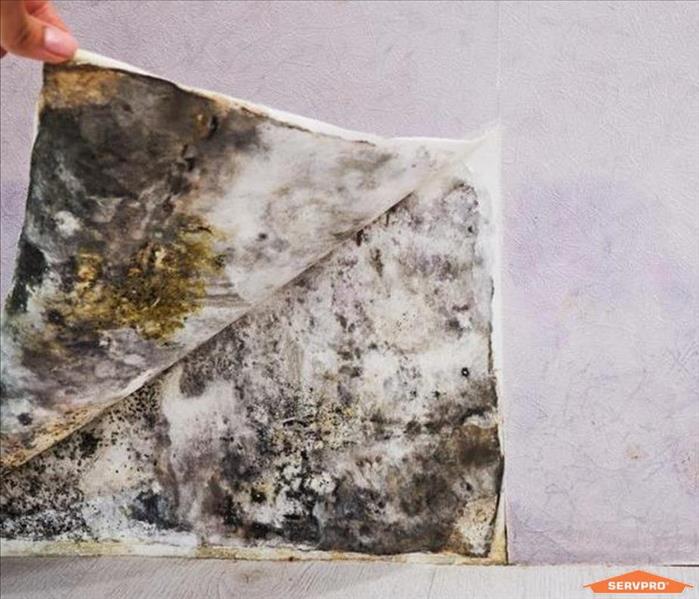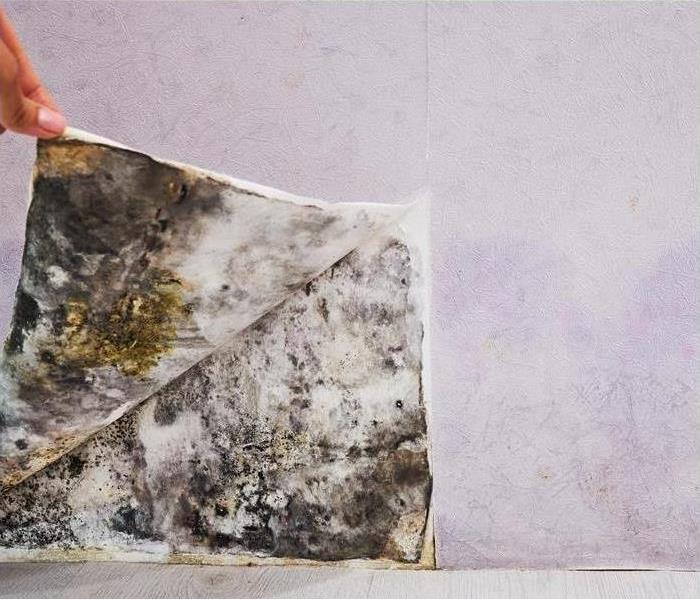Mold Signs
2/24/2020 (Permalink)
Common signs that you might have mold
Signs of mold can mean you need a mold inspection. If mold is hidden then you will only find out about it by noticing mold signs.
By noticing mold signs you can find mold early. This can save you a lot of money and a lot of trouble since you can stop mold before it becomes a much bigger problem.
- Mold Smell
Another sign of hidden mold is a moldy smell. If the smell is worse in certain rooms then the mold is probably growing near that area. If the mold smell gets worse when the air conditioning or heating is on then there could be a mold problem in your HVAC or in your air conditioner or heater. - Seeing Mold
Sometimes people see mold without realizing it. You might have to look closely to identify mold. People often have mold growing in their bathroom, on the grout between tiles. However, they do not realize it is mold. People also might ignore small amounts of mold, even though they can see it. However, small amounts of mold means there is enough moisture for mold to grow. It can mean there is more mold in the home. For example, mold hidden behind a wall eventually grows through. This leads to small spots of mold on the inside wall. - Humidity
Another potential mold sign is humidity. High humidity can lead to condensation and water accumulation. Things also take longer to dry out when the air is humid. Some molds can live off humidity in the air. A humidity level above 60% can lead to mold growth. It's best to keep humidity between 30% and 60%. You can buy humidity monitors to keep an eye on the humidity in your home. If you live near water, such as the coast or a lake, the humidity may be high. Using air conditioning and HVAC can also change the humidity levels indoors. - Condensation
Condensation may create moisture problems because the water from condensation can build up. Condensation is also a sign of humidity. Condensation often occurs on cold surfaces, such as windows and metal pipes. This is because when water vapor in the air touches a cold surface, it cools and becomes liquid. If you often see condensation, it could be a sign of a moisture problem, and perhaps a mold problem. - Water Leaks
Water leaks can be a sign of mold. Leaks in pipes and roofs are the most common. Cracks in walls can also let in moisture. Leaking taps can also create moisture problems. Leaks are often hidden (for example inside wall cavities or in the attic). If a leak is undetected for a long time, it is very likely to cause mold. If you discover a leak then you should check for mold. - Leaking Roof or Attic
Signs of a leaking roof are water damage on the ceiling below the attic. There will also be signs of water damage in the attic. Cracks and splits in the roof are another sign. Beams that have gotten moisture in them become weakened. This can lead to the roof sagging. - Flooding
Another sign you could have mold is if your house has been flooded in the past. Flooding that left materials, like drywall, wet for more than 24 hours probably caused mold. Past flooding can be a sign you have hidden mold (eg inside wall cavities). It can also be a sign of mold problems in the basement. - Damp Basement
The basement is one room that usually doesn't get much ventilation. It is usually cold too, which can lead to condensation. Water can end up running down into the basement, also. If it floods, the basement is usually the worst affected room. If you notice your basement is often damp, this could be a sign of a mold problem. - Water Stains
Another sign of a water problem is water stains on walls, ceilings, and other surfaces. Often stains will be yellowish. If there is mold growing the stain might be darker. Ceiling leaks often cause water stains in the walls and ceiling. Stains around windows can also be a sign of water intrusion. - Paint
When there is a lot of moisture, paint may start to come off surfaces. Paint, or wallpaper, may be peeling, cracked, bulging, or bubbling if moisture is building up behind it. - Rust
Rust in the home is a sign of a moisture problem. You might see rust on nails or metal pipes. This could mean you have high humidity, condensation, a water leak, or some other water problem. - Warping
When moisture gets into wood, drywall and other materials it can cause bowing. If you see warped walls, or other surfaces, you probably have a moisture problem. - Deterioration
Water problems can deteriorate materials in your home. Seeing building materials that have deteriorated from moisture can be another sign of mold. - Blocked Gutters
When it rains, you may see water building up on the ground near your house. This is usually caused by blocked gutters, or ground sloping towards your house. It can be a sign of indoor moisture problems because the water can seep into the walls or the foundation. Blocked gutters can also cause water to run down into the roof, or down the walls. - Poor Ventilation
Look out for rooms with poor airflow. This can be a sign of moisture problems. Ventilation helps to dry out moisture. A lack of ventilation allows moisture to remain much longer. - Standing Water
- You might often see water building up, or pools of water around your home. This can lead to mold problems. Sometimes you might be able to see moisture on walls and other surfaces too. There is often a lot of standing water in the bathroom or kitchen. Steam in these rooms can also create problems.
- History of Water Problems
A history of water problems can also be a sign of mold. If your home has previously been flooded or has had water leaks, then you could have mold. - Dust
A dirty or dusty home is more likely to have mold. Mold grows on dust. Dust can also transport mold spores around the home.
Mold Inspection, Testing, and Removal
If you notice signs of mold in your home then you should consider having a mold inspection. Mold Testing also helps to locate mold, especially hidden mold.
If you find mold in your home then you will need to remove it. See the Mold Remediation page for a guide to removing mold






 24/7 Emergency Service
24/7 Emergency Service

